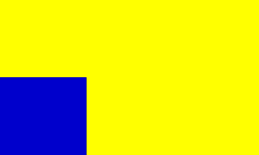by: Halsema.org editors
Follow this link to view photos and maps of Mahon (Mao) and Menorca.
Mahon it’s history and culture:
There is some debate over what the correct spelling of the city’s name in English should be; due to the general tendency in English to ignore accents in foreign words, many dictionaries refer to the city by an adaptation (Mahon) of its Castilian Spanish name (Mahón), while many other sources vouch for using the Catalan spelling (Maó) in English-language publications.
Mahon, the capital and principal seaport of Minorca, in the Spanish province of the Balearic Islands. Port Mahon is situated on the east coast, at the head of a deep inlet which extends inland for 3~ m. It is an important harbour. The city occupies a conspicuous hill, and presents a fine appearance from the sea; it is solidly built of excellent stone. Many of the houses date from the British occupation, which has also left curious traces in the customs and speech of the people.
The Kings Island (Isla del Rey, so called as the landing-place of Alphonso III. of Aragon in 1287) contains a hospital built by the admiral of the British squadron in 1722; farther south-east on the shore is the village of Villa Carlos or George Town, with ruins of extensive British barracks; and at the mouth of the port, on the same side, are the remains of Forte San Felipe, originally erected by Charles V. and twice the scene of the capitulation of British troops. Opposite San Felipe is the easily defended peninsula of La Mola (256 ft. high), which is occupied by extensive Spanish fortifications. Mahon is one of the principal quarantine stations of Spain; the lazaretto, erected between 1798 and 1803, stands on a long tongue of land, separated from La Mola by the inlet of Cala Taulera.
The principal modern buildings are the military and naval hospitals, the theatre, museum, library and schools. There are an arsenal and extensive quays. From its position on the route of vessels plying between Algeria and the south of France, the harbour is much frequented by French cargosteamers; it is also a Spanish naval station. The principal exports are grain, live stock and fruit; cement, coal, iron, machinery, flour, raw cotton and hides are imported. Shoes and cotton and woollen goods are manufactured. Thousands of vessels enter the port every year, so the harbor is essential to the islands foreign trade.
Mahon is the ancient Portus Magonis, which under the Romans was a municipium (Mun. flavium magontanum), probably including the whole island under its authority. As the name suggests, it had previously been a Carthaginian settlement. The Moors, who occupied Minorca in the 8th century, were expelled by James I. of Aragon in 1232. Khair-ed-Din Barbarossa besieged and captured the city in 1535; and in 1558 it was sacked by a corsair called Piali. The British, who under James Stanhope, afterwards Earl Stanhope, seized the island in 1708, made Mahon a flourishing city, and in 1718 declared it a free port. In 1756 it fell into the hands of the French through the failure of Admiral Byng to relieve the garrison of St Philips (San Felipe). Restored to the British in 1762, it was in 1782 heroically but unsucceasfully defended by General Murray. In 1802 it was finally ceded to Spain by the treaty of Amiens.
A traditional cheese made on the island (formatge de Maó) is named after the city. So, traditionally, is mayonnaise.


